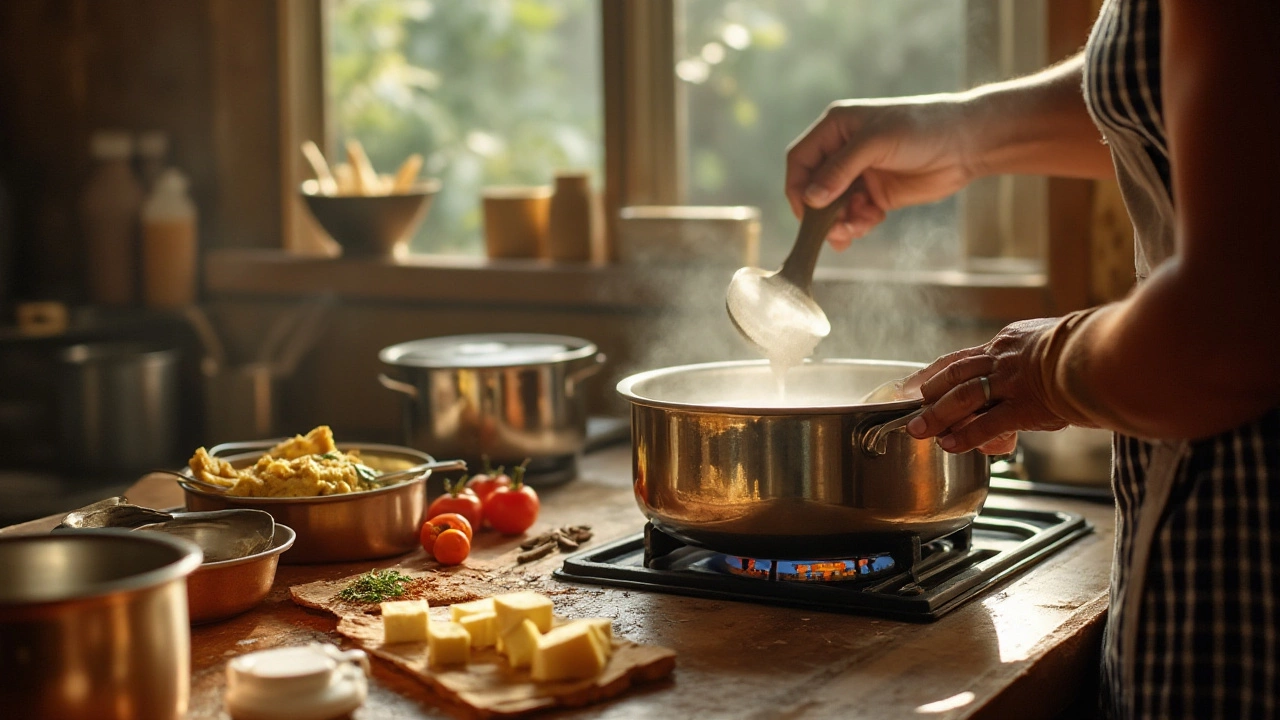Paneer Benefits: Why This Indian Cheese Is a Nutrient Powerhouse
When working with Paneer, a fresh Indian cheese made from curdled milk. Also known as cottage cheese, it offers a rich source of Protein, the building block for muscles and enzymes and Calcium, a mineral essential for strong bones and teeth. For people following a Vegetarian diet, paneer fills the gap left by meat, delivering high‑quality protein without the hassle of animal‑based cooking.
Key Nutrients in Paneer
First off, the protein in paneer is a complete protein, meaning it contains all nine essential amino acids your body can’t make on its own. One cup of paneer gives roughly 20 g of protein, enough to power a workout or rebuild tissue after an injury. That same serving supplies around 250 mg of calcium, about a quarter of the daily requirement for an adult. These numbers make paneer a snack that fuels muscles and keeps bones dense, especially when you pair it with leafy greens or whole‑grain chapatis.
Beyond protein and calcium, paneer packs vitamin B12, phosphorus, and riboflavin. Vitamin B12 is tricky for vegetarians because it mainly lives in animal products, but paneer offers a natural, dairy‑based source. Phosphorus works hand‑in‑hand with calcium to strengthen the skeletal system, while riboflavin supports energy production. The nutrient mix is low in carbs, so it won’t spike blood sugar – a helpful trait for anyone watching weight or managing diabetes.
How does all this translate to everyday health? Regular paneer intake can improve bone density, lower the risk of osteoporosis, and aid muscle recovery after exercise. The high protein content also promotes satiety, meaning you’ll feel full longer and may eat fewer calories overall. Some research shows that dairy proteins, including those in paneer, can boost metabolism slightly, helping the body burn more calories at rest.
For vegetarians, paneer is often the go‑to protein source in Indian kitchens. It blends easily into curries, wraps, and salads, providing texture that beans or lentils sometimes lack. Because it’s made from milk, it carries the same calcium benefits as other dairy, making it a dual‑purpose ingredient – you get both protein and bone‑building minerals in one bite.
Cooking with paneer is versatile. Grill it with a brush of oil and spices for a smoky tandoori flavor, melt it into a creamy sauce for palak paneer, or toss cubes into a stir‑fry for a quick protein boost. The cheese holds its shape well, so it doesn’t fall apart in high‑heat dishes. That stability also means you can use it in baked recipes like paneer tikka‑rolls without worrying about a soggy texture.
Paneer’s cultural roots run deep across India, from the rich gravies of the north to the light salads of the south. Its mild flavor absorbs regional spices, making it a blank canvas for everything from fiery chili powders to subtle fenugreek leaves. Whether you’re cooking a festive feast or a weeknight snack, paneer fits the bill and adds a wholesome touch.
Below you’ll find a hand‑picked collection of articles that dive deeper into paneer’s nutritional profile, compare it with other plant‑based proteins, and share practical recipes to make the most of this versatile cheese. Each piece adds a piece to the puzzle of why paneer deserves a spot on your regular meal plan, so keep reading to uncover tips, tricks, and tasty ideas you can try tonight.

Is Making Paneer at Home Worth the Effort?
Curious about crafting your own paneer at home? This article explores whether homemade paneer is worth your time and effort. Discover the health benefits, taste differences, and cost-effectiveness of making paneer from scratch. You'll also find simple tips and tricks for perfecting your homemade cheese-making process. Let's delve into the appealing world of fresh paneer and why it might just become a staple in your kitchen.